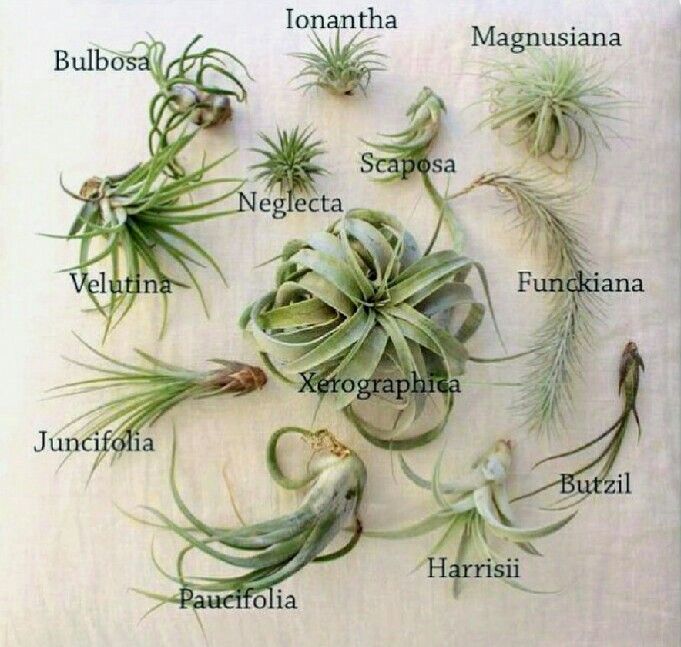
Introduction to Air Plants
Air plants, scientifically known as Tillandsia, are a fascinating group of epiphytic plants that have captured the hearts of plant enthusiasts worldwide. With over 650 species, air plants come in a wide variety of shapes, sizes, and colors, making them an excellent choice for adding a touch of natural beauty to any space. Unlike traditional plants that grow in soil, air plants absorb moisture and nutrients through their leaves, allowing them to thrive in unique environments.In this comprehensive article, we will explore the different types of air plants, their characteristics, and how to care for them. We’ll also dive into the history and cultural significance of these remarkable plants.
Types of Air Plants
Air plants can be broadly categorized into two main groups: Mesic and Xeric.
Mesic Air Plants
Mesic air plants prefer humid environments and regular watering. They typically have soft, green leaves and are found in tropical and subtropical regions. Examples of Mesic air plants include:
- Tillandsia ionantha (Sky Plant)
- Tillandsia stricta
- Tillandsia caput-medusae (Medusa Head)
Xeric Air Plants
Xeric air plants are adapted to drier conditions and can tolerate less frequent watering. They often have silvery-gray or white leaves covered in trichomes, which help them absorb moisture from the air. Xeric air plants are commonly found in arid and semi-arid regions. Examples include:
- Tillandsia xerographica (Queen of Air Plants)
- Tillandsia usneoides (Spanish Moss)
- Tillandsia tectorum (Fuzzy Tillandsia)
Popular Air Plant Species
Here are some of the most popular and widely cultivated air plant species:
| Species | Characteristics |
|---|---|
| Tillandsia ionantha (Sky Plant) | Compact rosette shape, turns red when blooming |
| Tillandsia xerographica (Queen of Air Plants) | Large, silvery-gray leaves, can grow up to 3 feet wide |
| Tillandsia usneoides (Spanish Moss) | Long, hanging strands of gray-green leaves |
| Tillandsia caput-medusae (Medusa Head) | Snake-like leaves that spread horizontally |
| Tillandsia bulbosa | Bulbous base with long, green leaves |
| Tillandsia cyanea (Pink Quill) | Bright pink bracts and purple-blue flowers |
| Tillandsia stricta | Compact rosette with green leaves |
| Tillandsia tectorum (Fuzzy Tillandsia) | Covered in white trichomes, giving it a fuzzy appearance |
Air Plant Care and Cultivation
Watering
Air plants absorb water through their leaves, so they require regular misting or soaking. The frequency of watering depends on the species and environmental conditions:
- Mesic air plants should be misted every 2-3 days and soaked for 30 minutes once a week.
- Xeric air plants can be misted once a week and soaked for 30 minutes every 2-3 weeks.
Light
Air plants thrive in bright, indirect light. Most species can tolerate some direct sun, but prolonged exposure may cause sunburn or discoloration. Place your air plants near a sunny window or under artificial grow lights.
Temperature and Humidity
Air plants prefer warm temperatures between 60°F and 90°F (15°C to 32°C). Avoid exposing them to cold drafts or sudden temperature changes. Maintain a humidity level of 40-60% for optimal growth.
Fertilizing
Use a balanced, water-soluble fertilizer diluted to half strength every 2-3 months during the growing season (spring and summer). Avoid over-fertilizing, as it can lead to salt buildup and damage the plant.
Mounting and Display
Air plants can be mounted on a variety of surfaces, such as driftwood, cork, or wire frames. Use a non-toxic adhesive or wire to attach the plant, making sure the roots have good air circulation. Display your air plants in a well-ventilated area with ample light.
Air Plants in History and Culture
Air plants have a rich history and cultural significance in various parts of the world:
- In ancient Mesoamerican cultures, air plants were used for medicinal and ceremonial purposes. The Aztecs used Tillandsia usneoides (Spanish Moss) to treat skin infections and respiratory issues.
- In the 19th century, air plants became popular in Victorian-era terrariums and hanging baskets, known as “Wardian cases.” This trend helped introduce air plants to a wider audience in Europe and North America.
- In modern times, air plants have become a popular choice for low-maintenance, eco-friendly home decor. Their unique appearance and adaptability have made them a favorite among plant enthusiasts and interior designers alike.
FAQ
Can air plants bloom more than once?
Yes, some air plant species can bloom multiple times in their lifetime. After the initial bloom, they may produce offsets (pups) that can grow into new plants.
How long do air plants live?
The lifespan of air plants varies depending on the species, but most live for 2-10 years. After blooming, the mother plant may die, but it will leave behind offsets that can continue the plant’s life cycle.
Do air plants need soil to grow?
No, air plants are epiphytic, meaning they grow on other plants or surfaces without needing soil. They obtain their nutrients and moisture from the air and water they absorb through their leaves.
Can air plants be grown outdoors?
Yes, many air plant species can be grown outdoors in warm, humid climates. However, they should be protected from direct sunlight and cold temperatures. Xeric air plants may be better suited for outdoor cultivation in drier regions.
How do I know if my air plant is healthy?
Healthy air plants have green, firm leaves and a well-developed root system. Curling or discolored leaves may indicate stress from under- or over-watering. Regular misting and proper lighting will help keep your air plants thriving.
Conclusion
Air plants are a fascinating and versatile group of plants that offer endless possibilities for creative display and low-maintenance enjoyment. By understanding the different types of air plants and their specific care requirements, you can cultivate a thriving collection that adds natural beauty to your living space. Whether you’re a seasoned plant enthusiast or a beginner, air plants are an excellent choice for bringing a touch of the tropics into your home.
References
“Tillandsia usneoides.” Wikipedia, Wikimedia Foundation, 4 September 2024, https://en.wikipedia.org/wiki/Tillandsia_usneoides.


